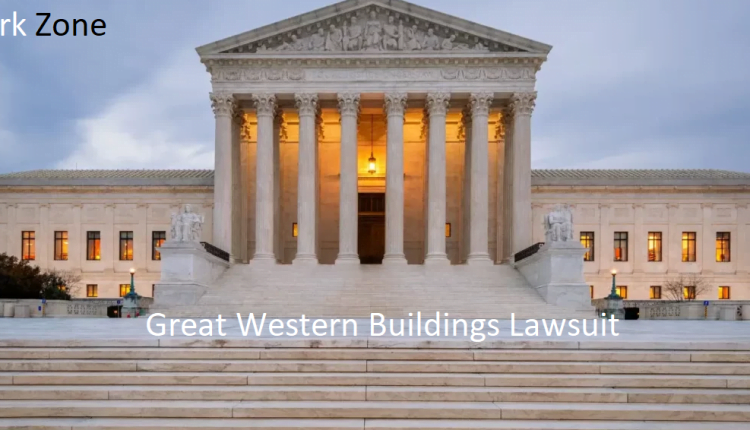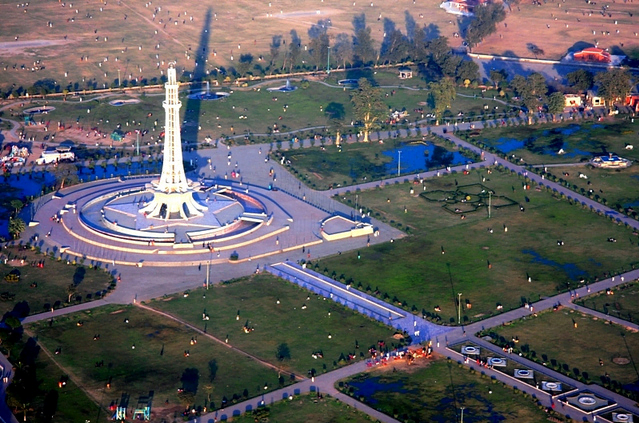The Great Western Buildings Lawsuit: A Deep Dive into the Case and Its Significance

The Great Western Buildings Lawsuit has been making headlines in the real estate and legal industries, sparking discussions and debates about its significance. This high-profile case revolves around a dispute between a local community and a prominent real estate developer, with millions of dollars at stake.
In this article, we will take a deep dive into the details of the case, examining the key players, the legal arguments, and the potential implications of the outcome.
The controversy surrounding this lawsuit has raised important questions about land use, community development, and the balance of power between developers and local residents. With its complex legal landscape issues and far-reaching consequences, the Great Western Buildings Lawsuit has captured the attention of both the public and experts in the field.
In order to fully understand the significance of this case, we will explore its history, the current state of affairs, and the potential impact on future legal proceedings and community development projects. By delving into the facts and complexities of this lawsuit, we hope to shed light on its importance and provide a comprehensive overview of the issues at hand.
Historical Context of the Lawsuit.
The historical context of the lawsuit sheds light on the events leading up to the legal dispute. The Great Western Buildings project, a proposed development of luxury condominiums in the heart of the community, has been a topic of contention for several years. The developer, known for their ambitious and often controversial projects, had faced opposition from local residents and community organizations from the very beginning. Concerns about the impact on the neighborhood’s character, increased traffic congestion, and potential strain on local resources fueled the opposition. The developer, on the other hand, argued that the project would bring economic growth, job opportunities, and much-needed housing to the area.
Over time, tensions between the developer and the community escalated, leading to multiple public hearings, community forums, and legal challenges. The lawsuit, which ultimately landed in court, centered around zoning regulations, environmental impact assessments, and the interpretation of local planning laws. The case has become a battle between the rights of the developer to pursue their project and the rights of the community to preserve the quality of life and character of their neighborhood.
As the legal proceedings continue, the outcome of the Great Western Buildings Lawsuit carries significant implications for future development projects and the relationship between developers and local communities. The case has highlighted the need for clear and transparent planning processes, robust community engagement, and a balance between economic growth and the preservation of community values. The resolution of this lawsuit will undoubtedly shape the dynamics of future land use decisions and serve as a precedent for similar disputes in the future.
Key arguments presented.
In this contentious legal battle, one of the key arguments presented by the residents is the potential adverse effects of the proposed luxury condominium complex on the surrounding community. They argue that the increased population density and traffic congestion resulting from the project would strain the existing infrastructure, disrupt the peaceful neighborhood atmosphere, and decrease property values. Additionally, they raise concerns about the environmental impact of the construction, particularly regarding the potential disruption to local ecosystems and the depletion of natural resources.
These contrasting arguments highlight the complex issues at the heart of the Great Western Buildings Lawsuit. As the case unfolds, it will be crucial for the court to carefully consider and weigh the validity of these arguments, as well as the potential long-term implications for both the local community and the real estate industry as a whole. The outcome of this lawsuit will undoubtedly have significant ramifications, setting precedents for future land development disputes and shaping the relationship between developers and community stakeholders.
Also Read: Israel-Hamas Conflict
Impact on building industry standards.
The Great Western Buildings Lawsuit has the potential to set a precedent in the building industry, as it calls into question the standards and regulations that govern development projects. The case raises important issues surrounding the responsibility of developers to consider the impacts of their projects on local communities and the environment. It also highlights the need for clearer guidelines and stricter enforcement of building codes to ensure the safety, sustainability, and livability of neighborhoods.
If the court rules in favor of the residents, it could lead to a reevaluation of the current practices in the industry, forcing developers to place greater emphasis on community engagement and environmental considerations. This could result in more comprehensive impact assessments prior to construction, increased transparency in the planning process, and a stronger voice for local residents in shaping the development of their neighborhoods.
On the other hand, if the court rules in favor of the developer, it could reinforce the current standards and practices in the building industry. However, this outcome may also prompt a review of the existing regulations to ensure they adequately address the concerns raised by the community in this case.
Regardless of the final verdict, the Great Western Buildings Lawsuit has already sparked conversations about the need for a more balanced approach to development. It serves as a reminder that the building industry should not only prioritize economic growth but also consider the long-term impact on communities, infrastructure, and the environment. The outcome of this case will undoubtedly shape the future of building industry standards and influence the way developers and local residents interact in the years to come.
Lessons learned for future cases.
Lessons learned from the Great Western Buildings Lawsuit can provide valuable insights for future cases in the realm of real estate and community development. One key lesson is the importance of thorough due diligence and adherence to building industry standards and regulations. In this case, allegations were made against the developer regarding non-compliance with safety and environmental regulations, which not only posed risks to the community but also resulted in legal consequences.
Another lesson is the significance of effective community engagement and resident involvement in the development process. The Great Western Buildings Lawsuit highlighted the discontent and frustration of local residents who felt their voices were not heard and their concerns were ignored. This serves as a reminder that developers should prioritize meaningful engagement with the community, taking into account their needs, preferences, and potential impacts on the surrounding area.
Furthermore, the case underscores the importance of considering environmental considerations in development projects. The allegations of environmental violations and the resulting legal ramifications emphasize the need for developers to prioritize sustainability and minimize ecological impacts in their projects.
The Great Western Buildings Lawsuit offers several valuable lessons for future cases in the field of real estate and community development. By emphasizing thorough due diligence, effective community engagement, and environmental considerations, developers can navigate potential legal challenges and contribute to the overall well-being of the communities they serve.
Wrapping Up
In conclusion, the Great Western Buildings lawsuit has sparked important conversations about legal responsibility, building safety, and the protection of tenants’ rights. With the case still ongoing and its outcome uncertain, it is clear that this is a significant moment in the history of construction and real estate laws. As we continue to follow this case and its implications, it is crucial for all parties involved to prioritize the safety and well-being of those who live and work in these buildings.









